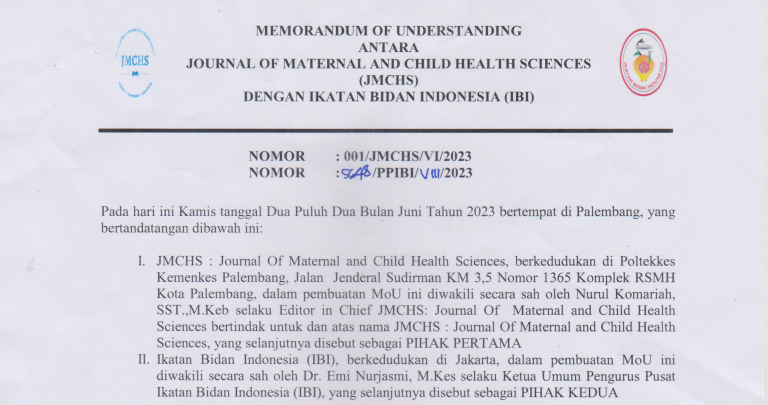The Relationship of usingBirth Ball with The Intensity of Pain
The Relationship of usingBirth Ball with The Intensity of Pain
Abstract
Abstract
Background: The process of childbirth is identical to pain that can cause birthing mothers to feel anxious. When the mother in labor feels anxious, the body will spontaneously release catecholamine hormones, namely epinephrine and norepinephrine. This hormone can cause complications for both mother and fetus. One of the non-pharmacological methods that can be used to treat labor pain is the use of a birth ball.
Purpose: of this study was to determine the relationship between the use of birth balls and the intensity of maternal pain at the Pratama Bhakti Clinic, Pekanbaru City. This type of research is an experimental study with a pretest-posttest control group design. The population of this study were all mothers who gave birth normally at the Pratama Bhakti Clinic, Pekanbaru City for the period March-April 2017, totaling 31 people. The sample of this study amounted to 20 people who were taken by purposive sampling technique. Processing and analysis of data is carried out in a computerized manner. Results: of statistical tests using Mann-Whitney showed that there was a significant difference in pain intensity between the groups of mothers who gave birth using a birth ball and who did not use a birth ball (p = 0.000). Conclusion: In an effort to reduce labor pain, it is recommended that the Pratama Bhakti Clinic apply the use of birth balls as an alternative to reduce labor pain.

This work is licensed under a Creative Commons Attribution-ShareAlike 4.0 International License.
Authors who publish with this journal agree to the following terms:
- Authors retain copyright and grant the journal right of first publication with the work simultaneously licensed under a Creative Commons Attribution License that allows others to share the work with an acknowledgement of the work's authorship and initial publication in this journal.
- Authors are able to enter into separate, additional contractual arrangements for the non-exclusive distribution of the journal's published version of the work (e.g., post it to an institutional repository or publish it in a book), with an acknowledgement of its initial publication in this journal.
- Authors are permitted and encouraged to post their work online (e.g., in institutional repositories or on their website) prior to and during the submission process, as it can lead to productive exchanges, as well as earlier and greater citation of published work












